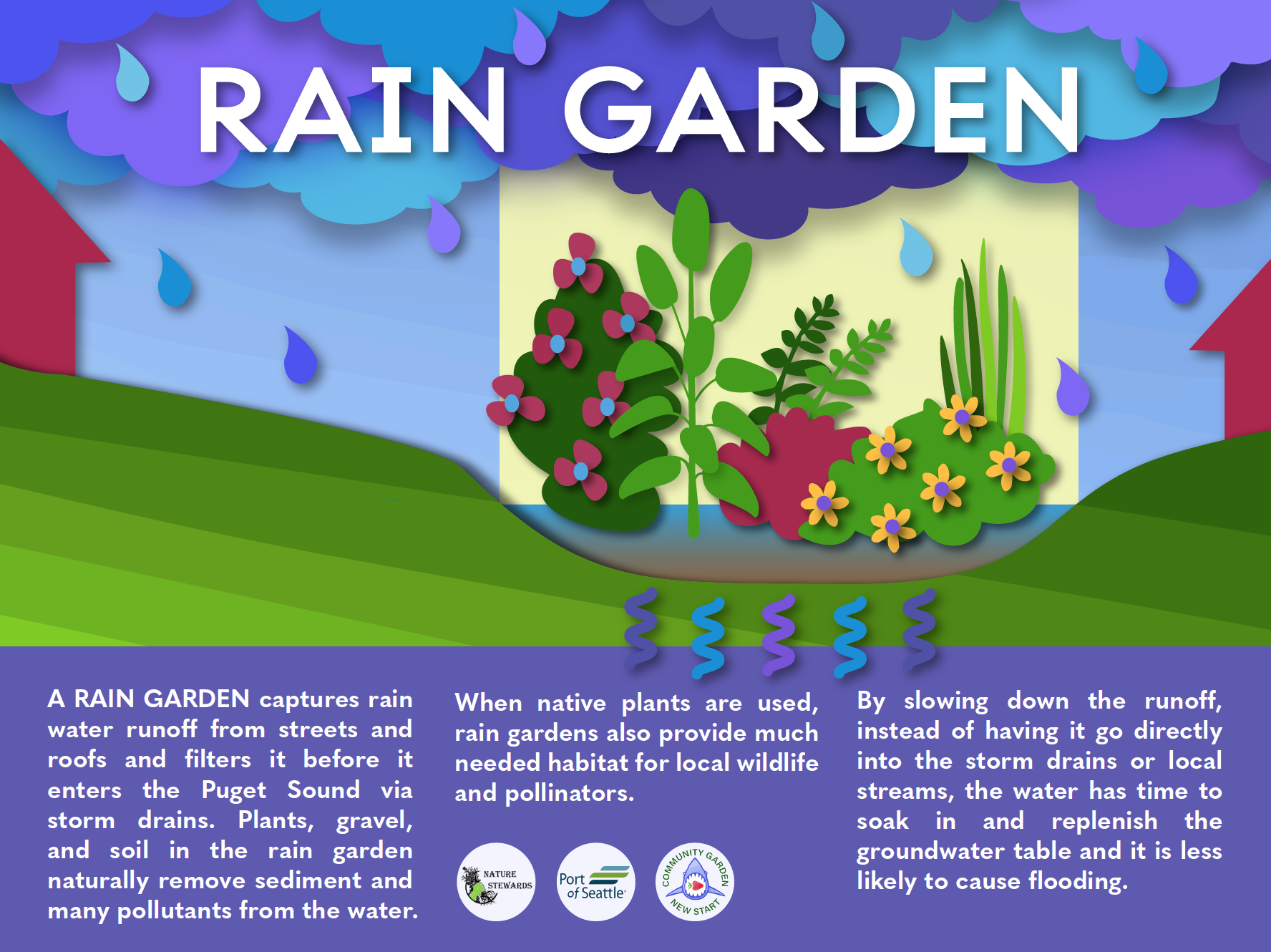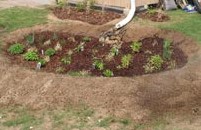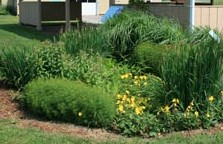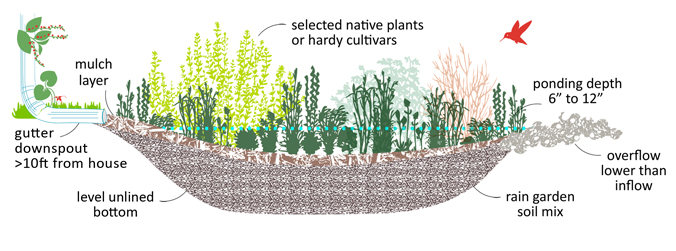Environmental Benefits
- Reduce the amount of pollutants that wash into lakes, streams, ponds and wetlands.
- Help sustain adequate stream flow during dry spells through infiltration and recharge.
- Enhance the beauty of your yard and the neighborhood.
- Help protect communities from flooding and drainage problems.
- Reduce the need for costly municipal storm water treatment structures.
What is a Rain Garden?
Rain gardens are shallow depressions in the landscape that typically include plants and a mulch layer or ground cover. In addition to providing increased groundwater recharge, they are expected to provide pollutant treatment. Pollutant treatment in rain gardens has been attributed to adsorption, decomposition, ion exchange, and volatilization. Rain gardens can be used in residential settings to accept runoff from a roof or other impervious surface. In a commercial setting, bioretention areas are similar to rain gardens, but are often larger, and have an engineered design.




What is Pollution?
Pollution is the undesirable state of the natural environment being contaminated with harmful substances, often as a result of human activity.
When stormwater (water that originated during precipitation events or from snow melt) moves over pavement, it picks up and carries with it fertilizer, pathogens, toxic contaminants, sediment and other pollutants before entering storm drains. These drains lead directly to waterways which lead to Long Island Sound. Polluted runoff can harm aquatic life and make the Sound unsuitable for fishing and swimming.
As a result of global climate changes, scientists predict that precipitation may increase in the Pacific Northwest during the winter season, leading to a greater volume of runoff. This presents a challenge, since more runoff means more pollution that can enter the Puget Sound estuary. Simply put, the more rain gardens, the less polluted runoff and a healthier Puget Sound.
Puget Sound is a large salt water estuary, or system of many estuaries, fed by highly seasonal freshwater from the Olympic and Cascade Mountain watersheds.
